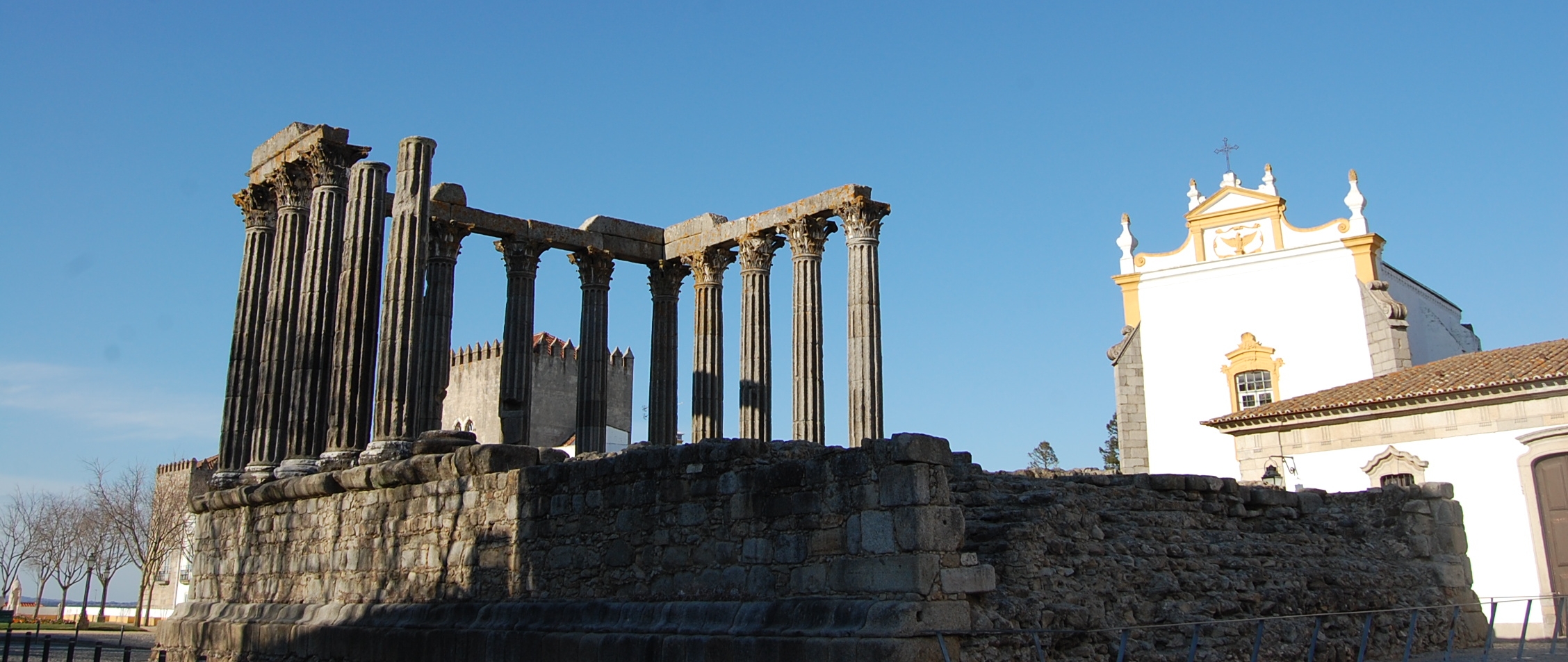Some days ago, (me, the local guide in the house) while on the way to making an Evora tour with a lovely American couple, the wife enthusiastically told me: “You know, we came here six years ago, when I was pregnant, and we liked this place so much that we decided to name our daughter Evora.” That’s how much one can fall for this city.
It’s no surprise that UNESCO classified Évora as being World Heritage (November 25, 1986). The city has its charm and reunites vestiges from several important periods from Portuguese history. From the romans to the glory era of Portugal (15th and 16th centuries), the city with its monuments was in such way preserved that nowadays you get the feeling of strolling endless and labyrinthine streets.
As a tourist, you should visit Évora chronologically, starting with:
- The Roman Temple, situated in the highest point of the city, from where it also starts the old roman city, Ebora Liberalitas Iulia. It dates from the 1st century and it served for many purposes, such as a tower from the walls, a stock house / a butcher house (also some of the reasons why it lasted until our days)
- Next to it, there is an inn that used to be a convent, Pousada dos Loios. Nicely converted, it belongs to the Pousadas de Portugal group, so you can be sure you’ll find plenty of comfort at a reasonable price…but wait, what is a pousada?
- The church next to it, Igreja dos Loios, belongs to the palace of the Dukes of Cadaval and gives you an example of how Portuguese mixed two beautiful arts in one only: the tile making and the gilded wood work.
- From there you could visit the Cathedral of Évora, one of the biggest religious monuments in the country and the best example of the transition from the Romanesque to Gothic. The cathedral contemplates the church, a cloister and a tower. It started to be built in the 1186 and it took almost 200 years to be finished.
Or
- Wandering around the city in search of picturesque places can also be a very pleasant exploring option. You could go directly to the main square of Giraldo through the street 5 de Outubro where there are several shops with traditional handicrafts and also the amazing crafts made out of cork.
The name of this central square pays homage to the man that conquered the city from the Moors to the Christian side, already in the year of 1166, Geraldo Sem Pavor (Gerald The Fearless). In this square, besides restaurants you can find amazing pastry shops where you can dip in the traditional tarts from Évora or the sweet conventual cakes from the region.
- Next, you should definitely visit The Bones’ Chapel that is part of the Saint Francis church. Built in the 17th century in the dormitory of the old convent, it is a symbolic allusion to the ephemeral and fragile human existence – by subscribing to the spiritual universe of death’ celebration that was marked during the Baroque era.
Hopefully you’ll go to Évora for an entire day so that you can enjoy all these places fully and walk around without a hurry. And if you’re up for a rich lunch, such as black pork accompanied by regaled wine, we recommend you two restaurants that will introduce you to the traditional Portuguese cuisine and get you belly full.
Places to eat:
- Botequim da Mouraria, No. 1 in TripAdvisor. Here you can try the typical Alentejo food and spoil yourself with good wine. Excelent service! It has only 8 places to eat, so you better get there early.
- Another restaurant is Pipa Redonda, with a good service and good food; the prices here are higher than in the other.









